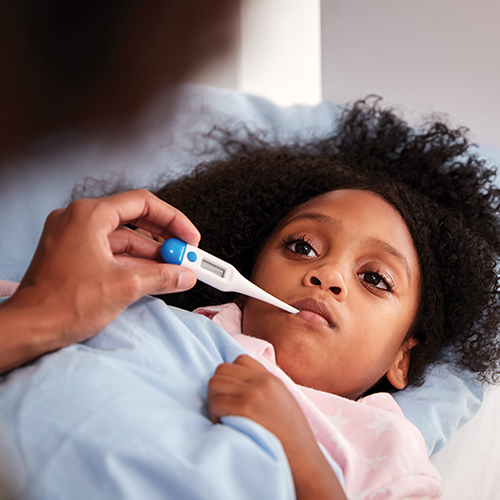July 2025
Water and summertime fun often go hand in hand. Yet for too many children, water can pose a serious risk of injury or death.
Among children aged one to four, drowning is the leading cause of death, according to the Centers for Disease Control and Prevention (CDC). Drowning is also one of the top three leading causes of accidental injury death in people ages 5 to 34. For every child who drowns, five end up in the emergency department with critical injuries — some never fully recover, according to the United States Lifesaving Association (USLA).
These tips from the CDC, USLA and Water Safety USA can help you protect your child — and you — from water danger this summer:
Enroll your child in swimming lessons
Formal swim lessons can reduce chances of childhood drowning by 88%, according to the USLA. The American Academy of Pediatrics recommends swim lessons to help prevent drowning that can begin for many children starting at age 1. By age four, most children are ready for swim lessons.
The AAP does not recommend swim lessons before age 1 because there is currently no evidence that swim programs for babies under age 1 lower their drowning risk. Parent-child water play class, however, can help your baby get used to being in the pool and can be a fun activity for both of you.
Water Safety USA has a guide on how to choose a good learn-to-swim program for your child.
Take adult swim lessons
Not all parents know how to swim or how to swim well, either. More than 15% of U.S. adults report not knowing how to swim, according to CDC survey data. Some 55% of adults have also never had swimming lessons. That percentage is even higher for Hispanic adults (72% have never swim lessons) and Black adults (63% have never had swim lessons.)
To keep your child safe, learn how to swim if you don’t. Even if you do know how to swim, a water safety class can teach you what to do in water emergencies, such as drowning or getting caught in riptides.
Contact your local community pool, park district or fitness center to see if they offer adult swim lessons. The American Red Cross offers adult swim lessons and a water safety certification program.
Prevent easy access to recreational water
If you have a pool or hot tub on your property, make sure your child can’t get in when you’re not looking.
Each year 75% of deaths from pool- or spa-related drownings are in children under age five, according to the Consumer Product Safety Commission.
- Between 2019 and 2021, there was an average of 358 pool- or spa- related fatal drownings reported per year, and 75% of those victims were younger than 5 years of age.
- The number of fatal child drownings in 2021 was 380, a 12 percent increase from the 339 fatal drownings reported in the previous year.
- Between 2021 and 2023, there was an average of 6,500 estimated pool- or spa-related, hospital emergency department-treated, nonfatal drowning injuries each year.
To prevent accidental drowning, put up a pool fence at least four feet high. The National Drowning Prevention Alliance has “10 Do’s and Don’ts for Pool Fencing.”
Wear a life jackets
Whenever on or in open water, all children and adults should wear a Coast Guard-approved lifejacket. Federal law actually requires all children age 13 and under to have a life jacket on when a vessel is underway. Most open water drowning accidents happen on nice days, not stormy weather, according to the U.S. Coast Guards Boating Safety Division.
Never let children swim alone
The same goes for you. Always swim with a buddy. If something unexpected happens, there’s someone there who can help or get help.
Adults should stay within an arm’s length of young children and inexperienced swimmers at all times.
Designate a “water watcher”
Always have someone responsible and trained watching your kids and teens when they are in, on or around water — even if they know how to swim. Water Safety USA recommends “water watchers” should be at least 16 years old, know how to swim and know CPR or can call someone for emergency help.
If you’re a water watcher, don’t get distracted. Stay off your phone and put down your beach read when it’s your turn to do the watching. Your eyes should be on your kids at all times.
Make sure lifeguards are around
Water Safety USA says “water watchers” don’t replace the need for a lifeguard. Lifeguards are trained to spot early signs of drowning or problems in the water. At the beach, they can also spot signs of dangerous rip currents in oceans and lakes. Unless you are trained in water safety and lifesaving techniques, don’t let your child swim in a lake or ocean without a lifeguard on duty.
If you have a pool party for your child, consider hiring a lifeguard for an extra layer of protection. If your child is invited to a pool party, ask whether there will be a lifeguard on duty.
Pay attention to beach warning signs
Swimming in lakes and oceans comes with risk of rip currents, which can pose a danger to even the strongest adult swimmers. Rip currents cause more than 80% of lifeguard ocean rescues, according to the USLA.
When going to a lake or ocean, pay attention to red flag warnings. If you see one, stay out of the water, even if there’s a lifeguard. The USLA has more information on how to spot and handle rip currents here.
The USLA also has these other tips for swimming in open water:
- Don’t rely on inner tubes, plastic air mattresses, or other inflatable toys to keep your kids, or you, safe.
- Don’t float where you can’t swim.
- When in doubt, don’t go out.
- Never overestimate your swimming ability.
- Ask a lifeguard about safe places to swim with children and beginner swimmers.



